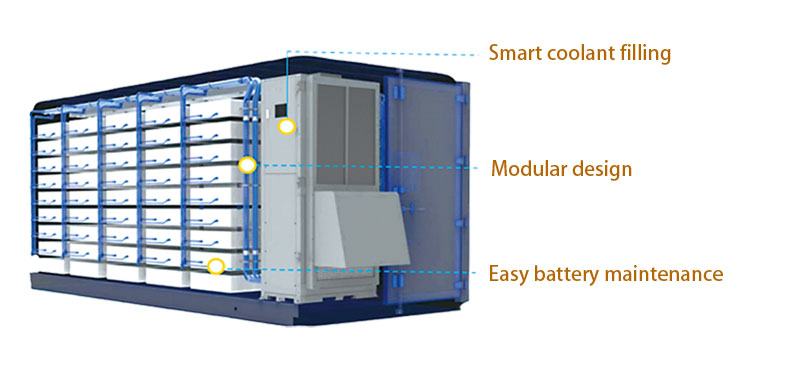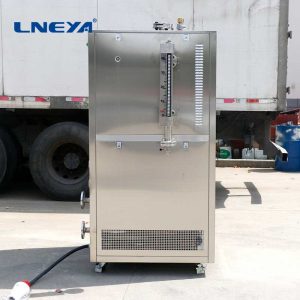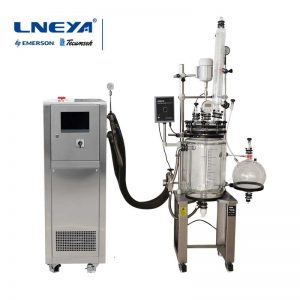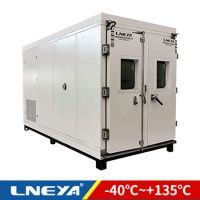Battery Energy Storage System Cooling Solutions: Liquid Cooling VS Air Cooling
Battery Energy Storage System Cooling Chiller is a device used in battery thermal management. Common cooling methods in battery thermal management include air cooling and liquid cooling. So, do you know the difference between these two cooling methods?
There are two thermal management methods for lithium battery units, air cooling and liquid cooling have their own characteristics. Battery Energy Storage System Cooling Chiller can be highly integrated with the battery pack, easy to install on site, occupies a small area, and there is no need to worry about dust, water vapor condensation and other issues. In the case of thermal runaway precursors, the liquid cooling solution can rely on a large flow of cooling medium to force the battery pack to dissipate heat and realize heat redistribution between battery modules, which can quickly avoid the continuous deterioration of thermal runaway and reduce the risk of runaway. The air cooling system has the characteristics of simple system, low manufacturing cost, and easy installation. It is widely used in scenarios where the battery energy density is low and the charging and discharging speed is slow.
1. Under the same inlet temperature and harsh wind speed and flow rate, the temperature of the liquid-cooled battery pack should be 30-40°C, while the temperature of the air-cooled battery pack should be 37-45°C. Liquid-cooled Battery Energy Storage System has better temperature uniformity.
2. In order to achieve the same average battery temperature, air cooling requires several times higher energy consumption than liquid cooling. Under the same power consumption, the temperature of the battery pack is higher for air cooling than for liquid cooling. Liquid cooling consumes less power.
3. Due to factors such as air specific heat capacity and small convective heat transfer coefficient, the heat transfer efficiency of battery air cooling technology is low, and the heat generated by the battery increases, which will lead to excessively high battery temperature and the risk of thermal runaway; the liquid cooling system can greatly reduce the thermal runaway of the battery risk.
4. The liquid cooling system is easier to ensure that the battery works at a comfortable temperature. Compared with the air cooling system, the battery life will be extended, and the investment in liquid cooling is less in terms of the overall life cycle.
The air cooling system has the advantages of small initial investment, low maintenance cost, and easy maintenance. It is more suitable for small civilian or commercial battery thermal management. However, Battery Energy Storage System Cooling Chiller has gradually become a suitable battery cooling method in large-capacity and high-energy-ratio fields such as large ground power stations.
| Air Cooling VS. Liquid Cooling | ||
| Air Cooling | Refroidissement par liquide | |
| heat exchange medium | Air | Liquid |
| drive parts | fan | no fan required |
| heat dissipation | General | The specific heat capacity of the coolant is 1000 times that of air, and the heat dissipation capacity is much higher than that of air cooling |
| energy saving | PUE is within 2.2 | PUE is within 1.2 |
| noise | high noise | low noise due to no fan |
| construction cost | The low-density layout of the cabinets takes up a large area of the equipment room, requiring the use of traditional precision air conditioners and cold and hot pipeline designs. | The high-density layout of the cabinet reduces the occupied area, and the low PUE means that the power supply, power distribution and infrastructure scale facilities are reduced. |
| site selection | It has high requirements on environmental climate and power factors. | It is not affected by the environment and climate, and is not restricted by energy policies, so it can be deployed anywhere. |
Produits et solutions
| Modèle | CNYL -45 |
| Capacité de refroidissement | 45KW |
| Précision du contrôle de la température | ±0,5℃ Enregistrement de la température en temps réel |
| Réfrigérant secondaire | Antigel à base d'éthylène glycol, conception entièrement fermée du système de circulation du réfrigérant |
| Réfrigérant | R410A |
| Débit | 300L/min~400L/min Réglage de l'historique de l'affichage |
| Électricité basse pression | Schneider/Siemens |
| Écran d'affichage | Écran tactile couleur de 7 pouces |
| Puissance | 380V 50HZ Choisir 220V60HZ 460V 60HZ |
| Matériau de la coque | Tôle laminée à froid pulvérisée REL7035 |
| Tuyauterie interne | SUS304 |
| Modèle | CNYL-5 | CNYL-8.5 |
| Capacité de refroidissement | 5KW | 8.5KW |
| Précision | ±0,5℃ Enregistrement de la température en temps réel | ±0,5℃ Enregistrement de la température en temps réel |
| Température minimale d'entrée de l'eau | 15℃(Peut être personnalisé en fonction du système de batterie) | 13℃(Peut être personnalisé en fonction du système de batterie) |
| Détection du capteur de pression du système | Pression de sortie du liquide, pression d'entrée du liquide, haute et basse pression du système de réfrigération | |
| COP | *2.0 | *2.2 |
| Compresseur | Compresseur hermétique (1 jeu) | 34cm3 /revCompresseur à spirale entièrement fermé (1 jeu) |
| Réfrigérant | R410A | R410A |
| Affichage | Écran tactile couleur de 7 pouces | Écran tactile couleur de 7 pouces |
| Plage de température ambiante de fonctionnement | -45℃~55℃ | |
| Plage de tension de contrôle | 18-32V | 18-32V |
| Réfrigération haute pression puissance maximale | 2.2KW | 3.5KW |
| Puissance électrique moyenne absorbée par la réfrigération (kW) | +1,5kwfréquence réglable | +2kwfréquence réglable |
| COP | *2.0 | *2.2 |
| Modèle | CHDYL-4 |
| Capacité de refroidissement | 4KW |
| Précision | ±1℃ Enregistrement de la température en temps réel |
| Compresseur | Compresseur hermétique (1 jeu) |
| Réfrigérant | R134A |
| Affichage | Écran tactile couleur de 7 pouces |
| Système de contrôle | PLC |
| Communication | CAN |
| Plage de température ambiante de fonctionnement | -45℃~55℃ |

Nous assurons la conception et la fabrication de systèmes complets de contrôle de la température. Des modèles standard aux produits personnalisés complets jusqu'à 1000 tonnes. Nous sommes spécialisés dans le service à la clientèle et nous nous efforçons d'aider chaque client à obtenir le système de contrôle de la température le mieux adapté à ses besoins spécifiques.
Nous fournissons des solutions personnalisées non standard.
Courriel : info@lneya.com ID WeChat : +8615251628237 WhatsApp : +86 17851209193

 LNEYA
LNEYA
 简体中文
简体中文



















































































